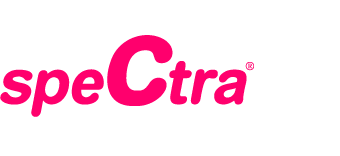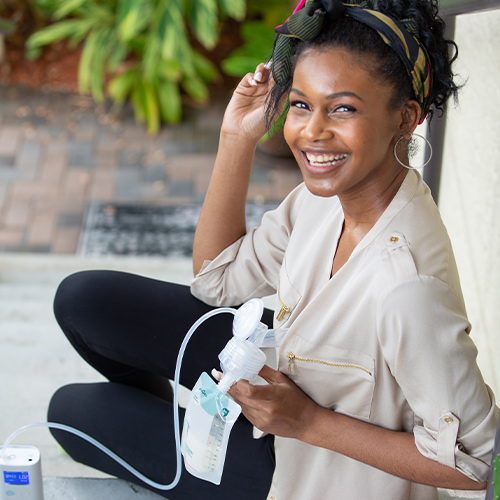Finding a Breastfeeding Friendly Pediatrician
Melissa Portunato MPH, IBCLC, RLC
Breastmilk is a living substance loaded with nutrients, antibodies, and vitamins, providing the perfect nutrition composition for your growing baby. Experts recommend breastfeeding exclusively for the first 6 months and continued breastfeeding for 2 years or as long as the mother and baby desire. Some mothers exclusively express breastmilk for their babies, while others prefer to nurse directly at the breast. No matter how you decide to provide breastmilk for your baby, you will give them the very best start by feeding them your precious breastmilk.
The pediatrician you choose for your baby will significantly impact your breastfeeding journey. Some pediatricians are more knowledgeable about breastfeeding than others, and it’s recommended for expectant parents to interview candidates for their baby’s doctor during pregnancy. Read on for questions you can ask and the answers you should look to receive.
What percentage of babies are breastfed in your office?
The national breastfeeding rates published by the CDC depict that 45% of infants are exclusively breastfed at 3 months, and about 25% are fed only breastmilk at 6 months. Your pediatrician’s practice should have a high breastfeeding rate, but don’t be discouraged if they don’t know the current national breastfeeding statistics. However, they should know the average of breastfed infants in their office and be willing to listen and support you on your breastfeeding goals.
Do you work with an International Board Certified Lactation Consultant (IBCLC) should any problems arise?
The IBCLC credential is the gold standard in lactation care, providing skilled, evidence-based breastfeeding support. Access to an IBCLC at your pediatrician’s office will make a big difference. It tells the pediatrician understands your concerns and values specialized lactation care for their patients.
How much breastmilk should my newborn consume daily?
Breastfed babies consume between 25-30 ounces per day. The amount your baby will consume stays consistent for the first 6 months. If you are exclusively pumping, aim for that total, and if you are nursing and pumping about half (12-15 ounces).
What growth charts do you use in your practice?
Breastfed babies should not be compared to formula-fed babies. Research shows breastfed babies are leaner over time and grow in different patterns than their formula counterparts. Breastfed babies should be measured on the WHO growth charts, NOT the CDC growth charts. You can download a free WHO growth chart here. Remember, percentiles are just a comparison with your baby among 100 other babies. If your baby is not growing as quickly as their peers, it doesn’t necessarily mean feeding is an issue. Genetics should be considered, and seeking advice from an IBCLC.
When is supplementation medically necessary, and how should it be given?
On average, your baby should not lose over 10% of their birth weight and be back at their birth weight at 2 weeks. If your baby requires supplementation, your pediatrician’s first advice should be to breast pump and provide breastmilk as a supplementation in addition to nursing directly at the breast. Alternative feeding techniques like a cup, spoon, or syringe should be suggested instead of bottle feeding. If bottle feeding is preferred, the paced bottle technique is the best way to feed your newborn with a bottle.
When do you recommend introducing solids?
AAP recommends exclusive breastfeeding for the first 6 months, introducing solids at 6 months, and continued breastfeeding for 2 years or as long as mother and baby desire. Your baby does not need any other food, water, or juice – only breastmilk for the first 6 months.
When do you recommend weaning from breastfeeding?
The answer here should be until mother and baby desire. There is no specific timeline for weaning, and every family should make a personal decision on when to discontinue breastfeeding. Studies show there are benefits to breastfeeding at one year and beyond. Breastmilk continues to be a source of nutrients, antibodies, and vitamins through toddlerhood and early childhood.
Be prepared and educate yourself before you begin breastfeeding. Finding a pediatrician that supports your decision to breastfeed is important and can influence the achievement of your breastfeeding goals. If your pediatrician is not supportive of breastfeeding, you can always opt for a second opinion. You are your baby’s advocate.
Need help getting started with breastfeeding? Schedule a complimentary consultation with a Spectra Baby USA IBCLC here.
We’re here for you, and we support YOU!
Source:
Kellams, A., Harrel, C., Omage, S., Gregory, C., & Rosen-Carole, C. (2017). ABM Clinical Protocol #3: Supplementary Feedings in the Healthy Term Breastfed Neonate, Revised 2017. Breastfeeding Medicine, 12(4), 188–198. https://doi.org/10.1089/bfm.2017.29038.ajk


